KING, SPACEK, AND OTHERS ON 'CARRIE'
KING TALKS HORROR FILMS IN BOUZEREAU DOC ON TCM; SPACEK & MORE IN FANGORIA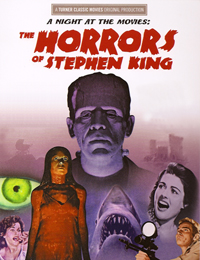
Monday night at 8pm eastern,
TCM premieres
The Horrors Of Stephen King, the third special in its Dreamworks-produced series,
A Night At The Movies. The documentary consists of an hour-long interview with King, and was directed by
Laurent Bouzereau, who also made the first two specials in the series,
The Suspensful World Of Thrillers, and
The Gigantic World Of Epics, each of which aired in 2009. The Stephen King edition will air several times throughout October, and each Monday of the month, TCM will feature a night of classic horror films.
Dread Central posted a few of King's quotes from the upcoming special, including this one regarding the
Brian De Palma adaptation of King's novel,
Carrie:
Carrie was a terrific piece of work. At the end of the movie comes, when Amy Irving kneels down to put the flowers on Carrie’s grave, a hand comes up through the grave and seizes her by the arm. The audience went to the roof, totally to the roof. It was just the most amazing reaction. And I thought, ‘We have a monster hit on our hands. Brian De Palma has done something new. He’s actually created a shock ending that shocks an audience that was ready for a horror film.’ And there were several people who did it after that.
Scott Holleran provides a rundown of some of the things King discusses on the program, including this bit about Carrie: "Discussing Brian De Palma’s 1976 version of his novel Carrie, King says he wasn’t even invited to attend a screening and, when he did see it, it was a double feature with Norman, Is That You?, a black-themed film, and he was surprised that the predominantly black audience responded to Carrie."
Meanwhile, our old friend John Demetry finds plenty of room for criticism of King's description of De Palma's film as a "terrific piece of work." Demetry writes, "King repeats variations on that term—'piece of work'—throughout, as if horror films were only reaction-making machines, thus limiting the value of all horror films to the level of product. This might explain King’s own prolific output. However, De Palma transformed King’s 'piece of work' into a work of art." Demetry then elaborates:
King’s voice-over lands on a still from John Boorman’s Exorcist II: The Heretic (1977): “Even psychologists who’ve studied the genre don’t understand what works and what doesn’t work.” Boorman takes film audiences way beyond King’s conception of how horror “works.” The freedom afforded by the horror genre allows Boorman to realize astonishment: primal imagery (tapping the collective unconscious) and mystical social metaphor (the wings of Pazuzu). This visionary (corrective) sequel to William Friedkin’s 1973 film contradicts King’s thesis. Transcending the realm of “psychologists,” the engaged spectator discovers the full terror of The Heretic: Evil exists. But so does Good. It represents a total metaphysical statement. The achievements of De Palma and Boorman suggest an alternative (auteurist) history of horror to the one presented in The Horrors of Stephen King. Carrie and Exorcist II represent high points in film history where the genre market provided the possibility for an artist’s personal expression to reach a mass audience.
For his own part, King went into detail about the differences between his novel and De Palma's film in his 1981 book, Danse Macabre, in which King states, "De Palma's approach to the material was lighter and more deft than my own—and a good deal more artistic."
SISSY SPACEK TALKS TO FANGORIA ABOUT 'CARRIE'
Meanwhile, last month, Fangoria #306 included an interview by Lee Gambin with Sissy Spacek, who discussed what she brought to the movie that was different from King's novel:
I read the book before I knew the film was being made, but then I reread it the day before auditioning. The thing about the novel that really stood out for me was that this girl was so pathetic, she was such a loser, and I believe that what I added when it came time to shoot the movie was to give the character a little bit of hope. I felt, "Here's this girl who has all these special powers, but she doesn't care about that; she just wants to be normal and fit in and have friends, a boyfriend, go to the prom." She was an artist, she wrote poetry in secret up in her room; she had this freak of a mother who destroyed her life, and Carrie just wanted to be happy, and for a moment, she gets to experience happiness—just for a moment.
Asked by Gambin how she channeled the dynamic energy required for the role, Spacek responded:
The script by Lawrence D. Cohen was so good and I was so into the story, and during production I really kept myself away from the rest of the cast. I felt very sorry for myself and isolated and different, just like Carrie did. And I really believe Brian did such a beautiful job directing it; he knew exactly what he wanted, his shots were so planned out. One of the main reasons I love him as a director is that he'd say, "OK, I want you there and then there and I need you to do this, this and this," and anything else you wanted to do, as long as it fit within his framework of the overall piece, you had the freedom to do, and that was great.
Fangoria included Carrie in its special 300th issue earlier this year, in which Ginger Snaps actress Emily Perkins stated that as an actress and a woman, she loves Carrie, "the best horror movie ever." Also in that issue, director Norman J. Warren (Satan's Slave) called Carrie "a perfect picture," and "the best horror movie." "Beautifully constructed and beautifully photographed," Warren told Fangoria, "the film captured me right from the opening scenes."
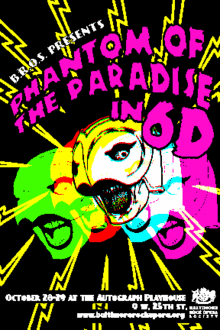 The Baltimore Rock Opera Society will present Brian De Palma's Phantom Of The Paradise in 6D, or six dimensions, over Halloween weekend. The show will be presented on Friday October 28, and Saturday October 29 at the Autograph Playhouse. For these two shows, the film, which "has been modified to blow your mind," will be projected from six projectors. In addition, there will be a live band with costumed singers, "AND," states the website decription, "it’s a costume party–-come dressed in the best rock freakiness you’ve got!" The descriptions at the website also tout security cameras and "custom video editing." Showtimes are at 8pm each night. Tickets are $10 each. Sounds like a steal, Winslow!
The Baltimore Rock Opera Society will present Brian De Palma's Phantom Of The Paradise in 6D, or six dimensions, over Halloween weekend. The show will be presented on Friday October 28, and Saturday October 29 at the Autograph Playhouse. For these two shows, the film, which "has been modified to blow your mind," will be projected from six projectors. In addition, there will be a live band with costumed singers, "AND," states the website decription, "it’s a costume party–-come dressed in the best rock freakiness you’ve got!" The descriptions at the website also tout security cameras and "custom video editing." Showtimes are at 8pm each night. Tickets are $10 each. Sounds like a steal, Winslow!

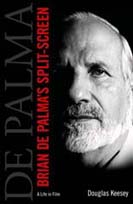
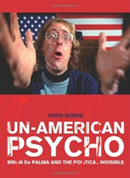


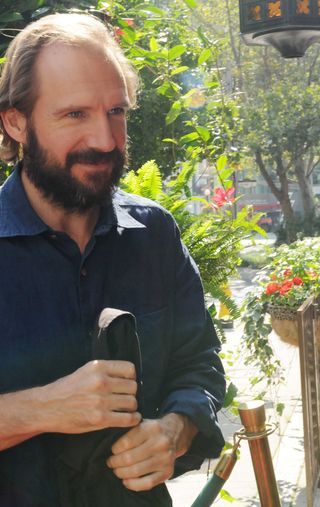 No, That's not Brian De Palma pictured at left, but Ralph Fiennes, who, as
No, That's not Brian De Palma pictured at left, but Ralph Fiennes, who, as  Monday night at 8pm eastern,
Monday night at 8pm eastern, 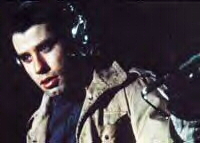
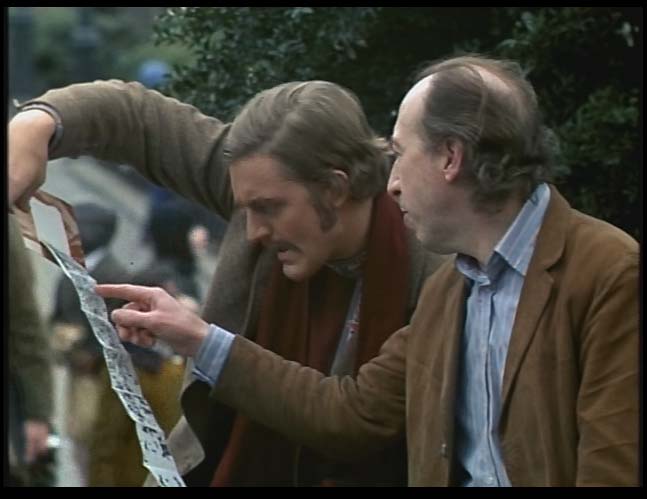
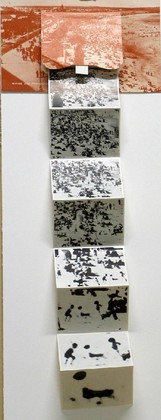 Richard Hamilton, credited as one of the fathers of the "pop art" movement, died September 13th in England at age 89. In 1968, the same year that Hamilton created the iconic sleeve and poster insert for the Beatles "White Album," he appeared in Brian De Palma's Greetings, discussing one of his real-life works, "A Postal Card For Mother" (pictured at left), with the character played by Gerrit Graham (the film scene is pictured above). In "A Postal Card For Mother," a series of blow-ups of a beach scene are folded out accordion-like from the source photograph.
Richard Hamilton, credited as one of the fathers of the "pop art" movement, died September 13th in England at age 89. In 1968, the same year that Hamilton created the iconic sleeve and poster insert for the Beatles "White Album," he appeared in Brian De Palma's Greetings, discussing one of his real-life works, "A Postal Card For Mother" (pictured at left), with the character played by Gerrit Graham (the film scene is pictured above). In "A Postal Card For Mother," a series of blow-ups of a beach scene are folded out accordion-like from the source photograph. 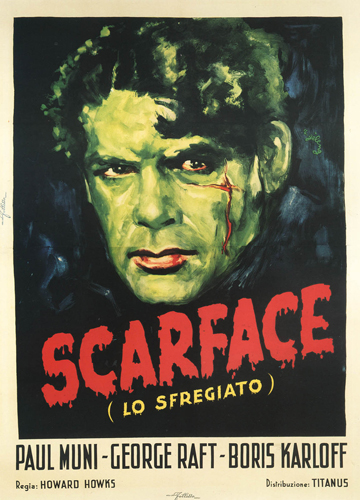 It looks like that
It looks like that  Robert Loggia talked to
Robert Loggia talked to  Eric Charmelo, who created the new TV series Ringer with his regular co-writer Nicole Snyder, tells
Eric Charmelo, who created the new TV series Ringer with his regular co-writer Nicole Snyder, tells